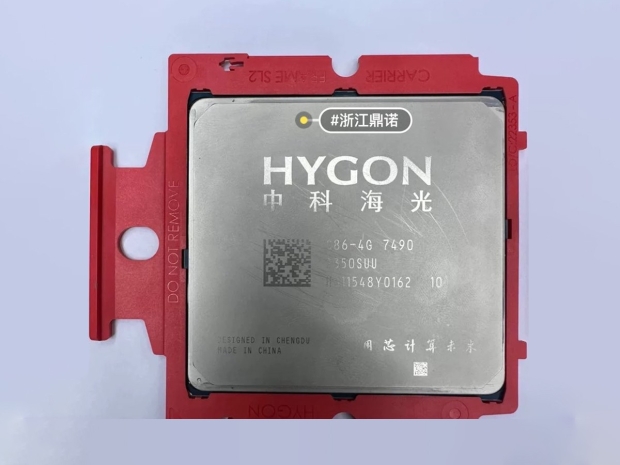Hygon’s new C86-5G processor represents a complete break from AMD’s Zen architecture, moving to its first fully homegrown design after five years of local R&D, according to TechPowerUp.
The CPU has 128 cores and 512 threads, thanks to a four-way simultaneous multithreading (SMT4) design, letting each core juggle four threads. SMT4 is not new, having shown up in Intel’s Xeon Phi and IBM’s Power8, but its deployment in a modern Chinese chip is significant.
The C86-5G marks a big jump from its predecessor, the C86-4G, which had 64 cores and 128 threads on a traditional SMT2 layout.
Built for enterprise heavy-lifting, the C86-5G offers 16 channels of DDR5-5600 memory support, potentially allowing up to 1TB with 64GB modules, a clear step up from the C86-4G’s 12 channels of DDR5-4800.
Connectivity details are a bit thin, but Hygon confirmed support for Compute Express Link 2.0 (CXL 2.0), which means it lines up nicely against what AMD’s EPYC 9005 (Turin) and Chipzilla’s 5th Gen Xeon (Emerald Rapids) are pushing. Since the earlier C86-4G already had 128 PCIe 5.0 lanes, similar or slightly better specs are expected here.
The company said the new microarchitecture is an “enhanced self-developed” design following the Zen-based Dhyana project. Hygon claims a 17 per cent improvement in instructions per cycle (IPC), although no independent benchmarks have surfaced to prove it yet.
The C86-5G also supports AVX-512 instructions, making it well-suited for AI, analytics, and scientific computing. It is designed to endure punishing data centre conditions and supports standard RDIMM modules for straightforward integration.
However, despite all the noise around the new chip, no one at Hygon has actually said anything publicly. No executives have given interviews or press releases, and all details so far come from leaked roadmaps and third-party reporting. TechPowerUp noted that Hygon claims the IPC boost, but there is no direct quote to hang it on.
While Hygon still lags behind AMD and Chipzilla in raw performance, the C86-5G’s specs in I/O, memory bandwidth, threading capacity, and core count show that it’s not just a second-rate knock-off merchant anymore.
There’s no official launch date yet, but given the C86-4G has been in racks since 2024, the new chip is probably close to being unleashed.

